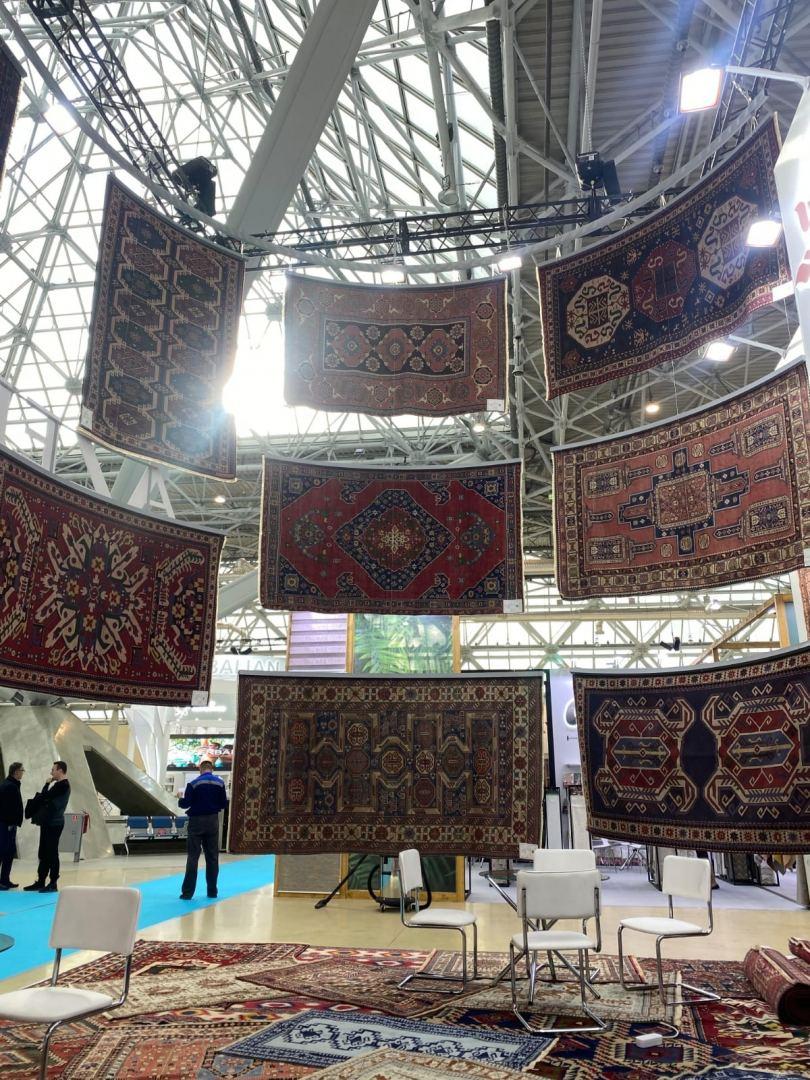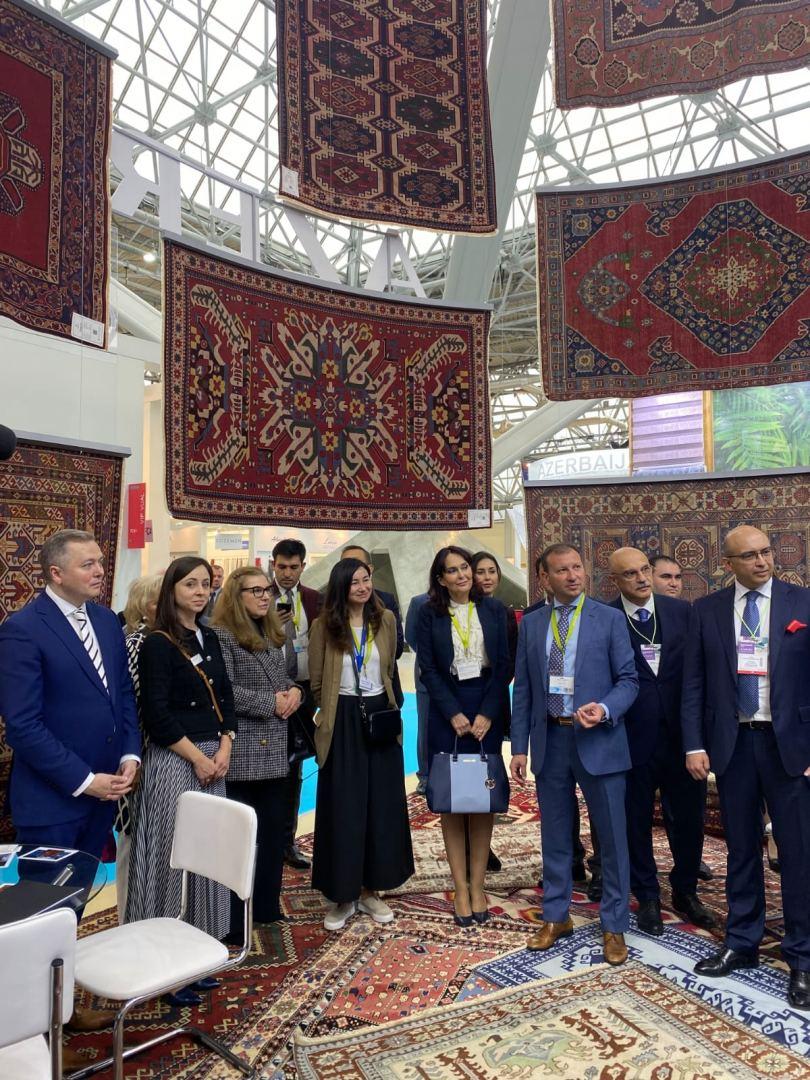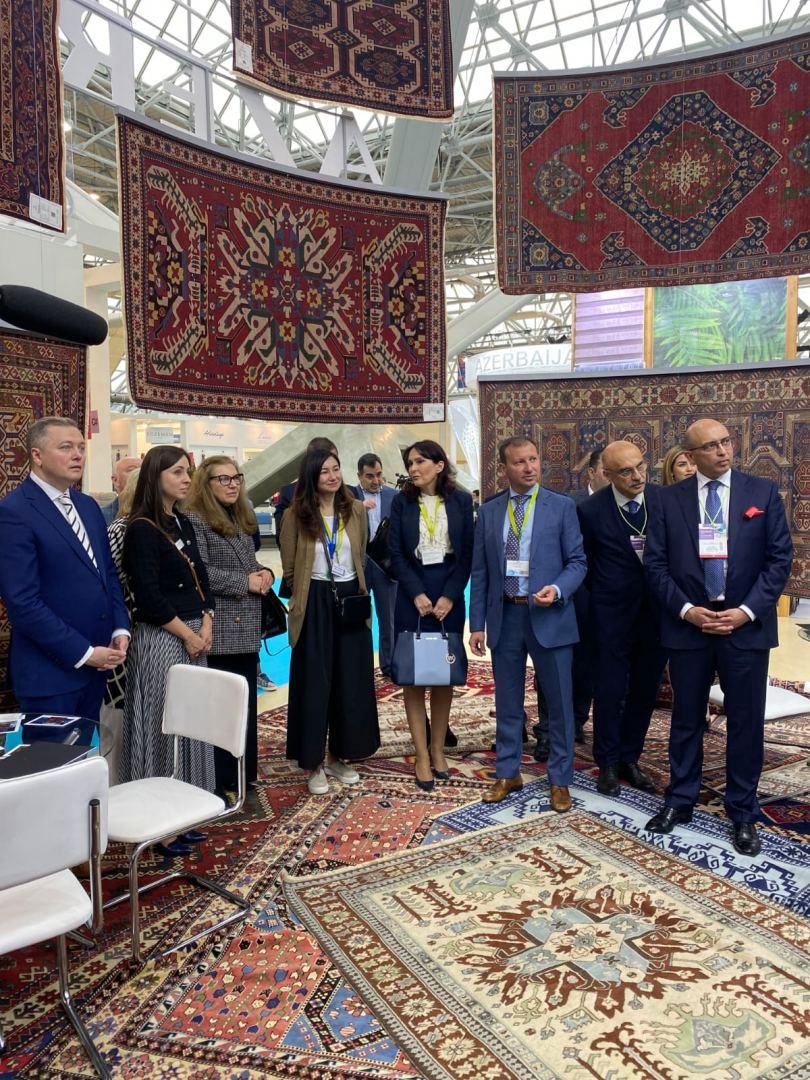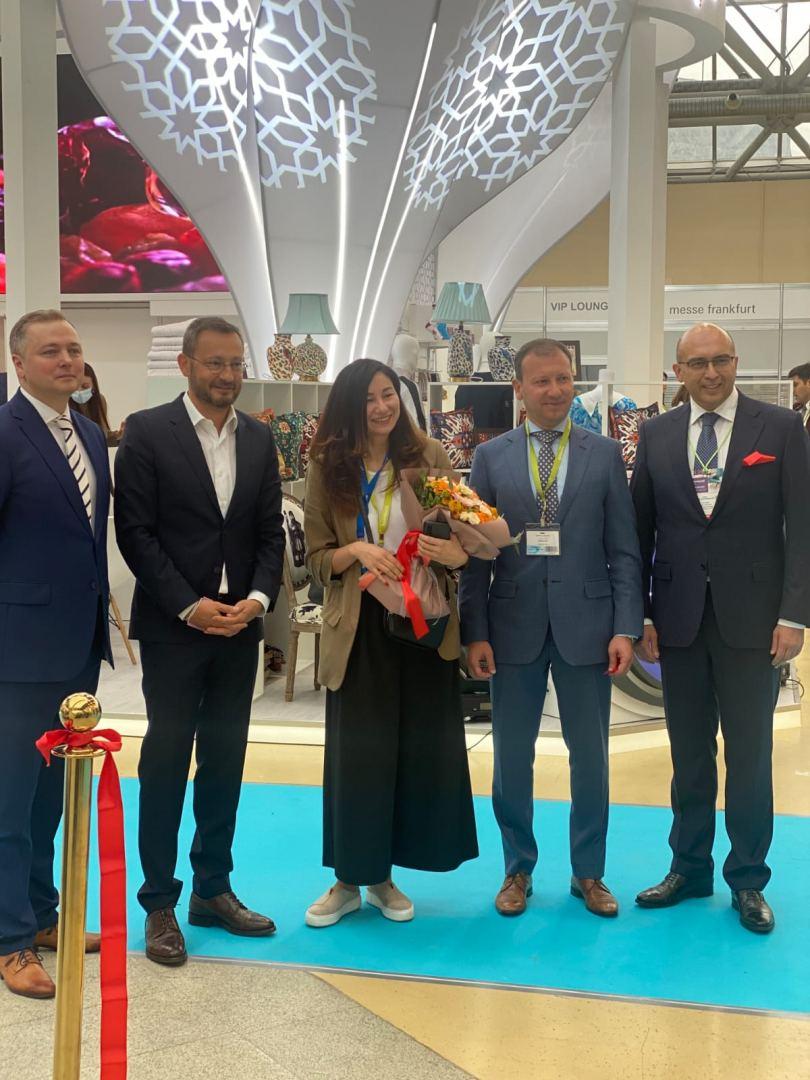Azerbaijan's carpet weaving art promoted in Moscow [PHOTO/VIDEO]
![Azerbaijan's carpet weaving art promoted in Moscow [PHOTO/VIDEO]](https://www.azernews.az/media/2021/09/15/azerxalca_140921_001.jpg)
By Laman Ismayilova
Azerbaijan's carpet weaving art has been successfully promoted at Heimtextil Russia, an international trade fair of interior fabrics, home textiles and decorating materials.
The national carpets are being presented at a unique national stand in Moscow for the first time.
The opening ceremony of the national pavilion took place on September 14. Azerbaijan Trade Representative to the Russian Federation Ruslan Aliyev and the creative team of Azerkhalcha headed by Chairman of the Board Emin Mammadov attended the ceremony.
Made in Azerbaijan stand features carpet weaving and yarn production. Alongside traditional (classic) Azerbaijani carpets, the exhibition also showcases modern carpets, which have recently been introduced to local and global markets by Azerkhalcha. Karabakh carpets aroused great public attention.
Heimtextil is a platform for meeting with major Russian and foreign manufacturers of home textiles, fabrics, and materials for decoration.
The trade fair gathered around 17,000 experts at the Central Exhibition Center in Moscow.
Heimtextil 2021 showcases home textiles, furnishings, wallpapers, paints, decorative lighting, smart home systems and much more.
During the exhibition, designers and specialists give lectures in decorating, textile design and interior décor while focusing on the latest trends and innovations.
Leading decorators, designers and architects from Europe and Russia share their experiences and the most notable projects in the lecture hall.
Particular attention is being paid not only to the interiors of houses or flats but also to the furnishing of restaurants, clubs, bars and other catering facilities, office and industrial buildings.
The Azerkhalcha OJSC is the largest manufacturer of handmade carpets in Azerbaijan. The company was established in May 2016 under the presidential decree.
Azerkhalcha focuses on the production and export of carpets and carpet products, organization of sales both domestically and internationally, application of new technologies in carpet production, etc.
Its factories are successfully operating across the country as each region has its own carpet weaving traditions.
Azerkhalcha OJSC produces both traditional Azerbaijani carpets and subject products.
Carpet-weaving art is considered an integral part of Azerbaijani culture and craftsmanship. Azerbaijani carpets are stored in many prestigious museums and private galleries around the world.
According to their technical aspects, Azerbaijani carpets are classified as flat-woven (pileless) and knotted (pile). The flat-woven carpets are linked to the earlier period of carpet weaving. There are several kinds of pileless carpets such as Shadda, Verni, Jejim, Zilli, Sumakh, Kilim and Palas.
Shadda is a flat weave carpet, made primarily in Nakhchivan, Agdam, Gubadly, Agjabadi. The artistic composition of shadda made by complicated whipping, as well as its constituents have a complex form.
One of the most widely spread types of flat-weave carpet is "verni". The key pattern of "verni" is the S-element. Its shape varies, it may resemble both figure 5 and letter S. This element means "dragon" among the nomads and “water” among the village people. According to ancient beliefs, a dragon featuring carpet would protect the family from foul weather. Agjabadi, Barda, Aghdam, Nakhchivan are the centers of this type of pileless carpets.
Jejims are woven on simple horizontal looms by narrow stripes 30–35 cm wide and 15–10 cm long. The resulting product is a cloth to be used as a wall carpet, a bedding coverlet, or curtains.
The major jejim production centers are Barda, Nakhchivan, Zangilan, Shusha, Shamakhi.
Zilli carpet is characterized by stylized forms of animals and vegetal elements. In terms of their composition and pattern, the Azerbaijani zillis are very diverse. They feature images of large elements in the shape of big lozenges, paired horns, and various stylized elements.
The Sumakh carpets have become widely spread and recognized over the last few centuries. Since the 18th century, they have been made in the country's Guba and Gusar regions.
The Sumakh carpets feature diverse stylized vegetal motifs, various geometrical elements such as large hexahedral, square, rhomboid medallions.
Kilim is the most widespread type of flat-woven carpets. They are made by passing the weft through the warp using the technique of compound interweaving. Kilim is characterized by a slot-like gap (opening) around the geometrical patterns.
The technique of kilim weaving predetermines the pattern shapes in the form of a lozenge, triangle, and trapezium. Images of animals, birds and humans are geometrized in kilims. Kilims of different regions are distinguished by their composition, pattern, and colors. In terms of their technical peculiarities, kilims can be classified into five major groups based on the area of production: Kazakh, Karabakh, Absheron, Shirvan and Tabriz kilims.
Palas is one of the widely spread flat-weave carpets. The palas weaving process consists in passing the weft through the warp by a simple technique.
The weavers decorate the palas with traditional patterns in the form of horizontal stripes commonly used throughout Azerbaijan. As a rule, the palas is not framed by a border.
---
Follow us on Twitter @AzerNewsAz
Here we are to serve you with news right now. It does not cost much, but worth your attention.
Choose to support open, independent, quality journalism and subscribe on a monthly basis.
By subscribing to our online newspaper, you can have full digital access to all news, analysis, and much more.
You can also follow AzerNEWS on Twitter @AzerNewsAz or Facebook @AzerNewsNewspaper
Thank you!




